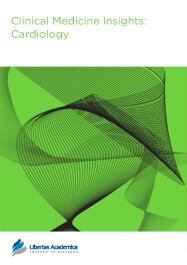

Publication Date: 25 Aug 2014
Type: Original Research
Journal: Clinical Medicine Insights: Cardiology
Citation: Clinical Medicine Insights: Cardiology 2014:8 71-77
doi: 10.4137/CMC.S17367

Background: Mitral regurgitation (MR) is frequently reported in everyday echocardiograms; accurate assessment is essential for appropriate management and decision making.
Objective: We performed a self-audit in order to define the prevalence and pattern of MR and to evaluate methods of assessment with the perspective of developing a quality improvement project.
Methods and setting: This retrospective analytical study was conducted in a university hospital. Inclusion criteria: age more than 18 years and medical records available within the facility, including a “complete” medical history. Using the picture archiving and communication system, we reviewed 961 echocardiograms performed over a 6-month period. The methods of assessment of native mitral valve regurgitation were reported, and also relevant medical data were collected using an electronic archiving system.
Results and discussion: Among the 961 patients reviewed, 322 (33.50%) had MR, with variable grades. MR pattern (organic versus functional) was not specified in 49.68% of cases. “Eyeball” assessment and “color jet area” were the most frequently used methods for MR assessment (90.06% and 27.95%, respectively), while “vena contracta” and “flow convergence” methods were rarely implemented (1.55% and 2.17%, respectively). Discussion is made according to current guidelines, while showing the strengths and weaknesses of each method.
Conclusion: The prevalence of MR was 33.50%, and in nearly half of cases, the MR pattern was not specified. Qualitative and semi-quantitative methods of assessment were mostly used; quantitative assessment should be implemented more frequently, in accordance with current guidelines. Increasing clinical awareness by creating and implementing a quality improvement project is essential in this context.
PDF (484.71 KB PDF FORMAT)
RIS citation (ENDNOTE, REFERENCE MANAGER, PROCITE, REFWORKS)
BibTex citation (BIBDESK, LATEX)
XML
PMC HTML

I am impressed by the efficiency at each step of submission in the journal. Based on the first-hand experience, I am confident that this journal will have a great future, and the impact factor will rise rapidly.
Facebook Google+ Twitter
Pinterest Tumblr YouTube